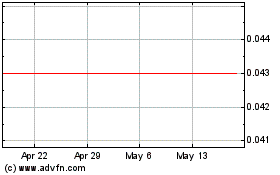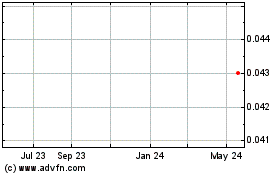Asian Shares Mixed as China Opens Weak--Update
January 14 2016 - 9:56PM
Dow Jones News
By Chao Deng
China shares hovered near bear-market territory in Friday
morning trading, extending an early-year selloff.
The Shanghai Composite Index was last down 0.7% at 2987.21,
trading just above its lows from last summer. Its current level is
down nearly 20% from its Dec. 22 close. A bear market is defined as
a 20% or more drop from a recent high.
The Hang Seng Index was off by 0.5%.
The energy sector in Australia gave up most of its early morning
gains, with the S&P/ASX 200 roughly flat. Japan's Nikkei Stock
Average rose slightly by 0.7%. South Korea's Kospi was up 0.1%.
Gaining oil prices overnight appeared to have encouraged some
investors to buy up energy shares, which have taken a drubbing amid
jitters about slowing global growth, with China at the center of
those concerns.
Liquefied Natural Gas Ltd. was up 8.1% and Woodside Petroleum
Ltd. gained 0.7%.
"We haven't necessarily hit the bottom," said Mohit Bajaj,
managing director at brokerage WallachBeth Capital LLC. The energy
sector has lost 8.7% and 10.8% in Australia and Hong Kong
respectively year-to-date.
Overnight, oil producers to miners and biotechnology stocks,
some of the most beaten-down corners of the market, carved out
sharp gains in the U.S. The Dow Jones Industrial Average rose 1.4%
and the S&P 500 rose 1.7%.
U.S.-traded oil futures gained overnight 2.4% to $31.20 a
barrel. In Asia on Friday, Brent crude oil was down a bit, at
$30.85 a barrel.
Early Friday, China's central bank set the yuan at 6.5637 to one
U.S. dollar, marking the sixth straight session it has guided the
currency roughly steady.
In the freely traded offshore market, yuan traded at 6.5984 to
one U.S. dollar, roughly unchanged from the previous day, when it
weakened by as much as 0.7%.
The gap between the values of the currency on two sides of the
border had widened slightly Thursday, causing jitters about how
China's central bank would direct the market going forward. A
record gap last week as bets by traders pushed the offshore yuan
lower had threatened Beijing's campaign to pitch the yuan as a
stable currency with international stature, triggering turmoil
across the globe.
China's central bank forced the gap to close earlier this week
by buying the freely traded yuan offshore through state-owned
banks, according to traders. It guided the onshore currency
slightly stronger early Thursday at 6.5616 to one U.S. dollar.
The Japanese yen was roughly flat at Yen118 to one U.S. dollar.
The local currency has gained 2% year-to-date, as turmoil in
Chinese and global markets have sent investors in a rush for
safety.
The Indonesian rupiah strengthened 0.7% to 13,810 to one U.S.
dollar. The currency had fallen as much as 1% on Thursday after
news of explosions in the Southeast Asian country's capital city of
Jakarta, although it recovered slightly after suspected government
intervention following a rate cut by the central bank.
The Hong Kong dollar, which is pegged to the U.S. dollar, traded
at 7.7793 to one U.S. dollar, after recording its sharpest drop in
more than a dozen years overnight to as weak as 7.7894.
Gold prices were up 0.4% to $1078 a troy ounce.
Write to Chao Deng at Chao.Deng@wsj.com
(END) Dow Jones Newswires
January 14, 2016 21:41 ET (02:41 GMT)
Copyright (c) 2016 Dow Jones & Company, Inc.
Liquefied Natural Gas (ASX:LNG)
Historical Stock Chart
From Feb 2025 to Mar 2025

Liquefied Natural Gas (ASX:LNG)
Historical Stock Chart
From Mar 2024 to Mar 2025
